For help with the project, NS called in experts from Foley Material Handling of Virginia.
“Each project is unique. No two turntables are alike. In fact, everything we build for NS is a one-of-a-kind product. Each piece of equipment is designed specifically for an application at each site,” says Mike Lipscomb, an engineer and sales manager for Foley.
Foley Material Handling Co., Inc., a 130-employee subsidiary of Virginia Crane, has been building and servicing custom-engineered railroad equipment from Ashland, Va., since 1975.
Foley crews arrived at Altoona with a list of NS requirements and began the first, and most important job of any turntable installation or replacement — obtaining accurate measurements.
Working within an existing pit, Foley’s engineers needed to ensure the new and improved table would fit the footprint already provided by the 1955 turntable the railroad inherited from descendants of the Pennsylvania Railroad.
Not only was Foley given mechanical and operational requirements for the new turntable, Norfolk Southern also gave the crane company a list of safety requirements to include in the project design.
“Being able to enhance safety and productivity leads to sustainability,” says Doug Corbin, NS assistant vice president and chief mechanical officer.
The most notable safety feature easily seen is the installation of double walkways designed for Occupational and Safety Hazard Administration-approved access to all cabinets, as well as pit access from both sides of the table by ladder. The walkways down each side are lined with top-rail and mid-rail handrails set at OSHA standard heights, a feature NS is installing standard on new structures and any upgrades to existing structures more than 6-feet above the ground or water level.
While the components of the bridge were being assembled, crews from the Orr Group worked in Altoona to disassemble and scrap the old turntable. The Orr Group also performed structural rehabilitation to the turntable pit including removing crumbling concrete, setting new ring rail and a new center pivot monument. Project planning and phasing, as well as engineering design and construction support services including coordination between the Orr Group and Foley were carried out by Urban Engineers, Inc.
Foley and the team from Clyde’s Transfer arrived with cranes, trucks and plenty of hands-on-deck to set the new turntable into the pit on Dec. 14, 2018.
Norfolk Southern provided a locomotive for load testing as Foley workers tested the 400-ton capacity table.
The table was operational, and crews continued working throughout December and January to complete radial track rebuild and installation to make the new turntable at Juniata Locomotive Shops fully operational.
CORRECTION AND CLARIFICATION: Urban Engineers coordinated efforts between The Orr Group and Foley during the Altoona turntable replacement process. This was incorrect and unclear in an earlier version of this report. Feb. 25, 2019, 10:01 a.m.





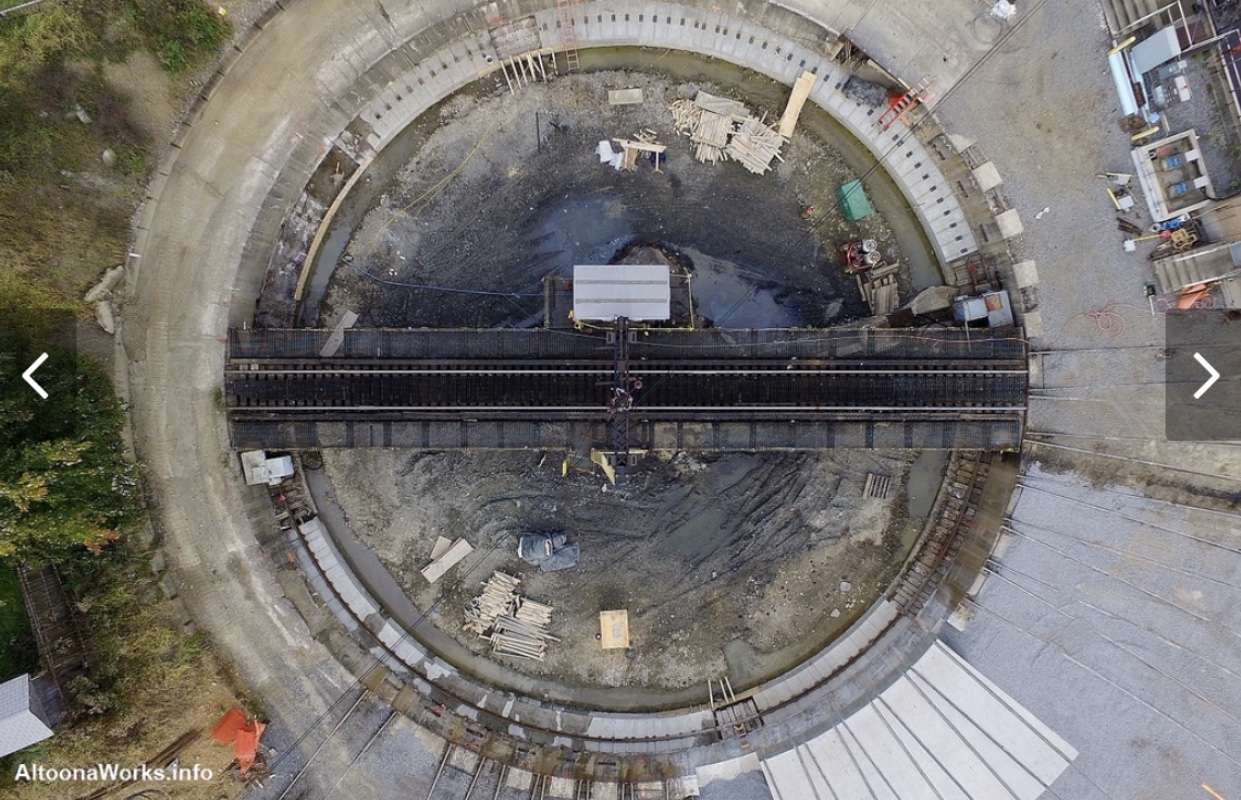



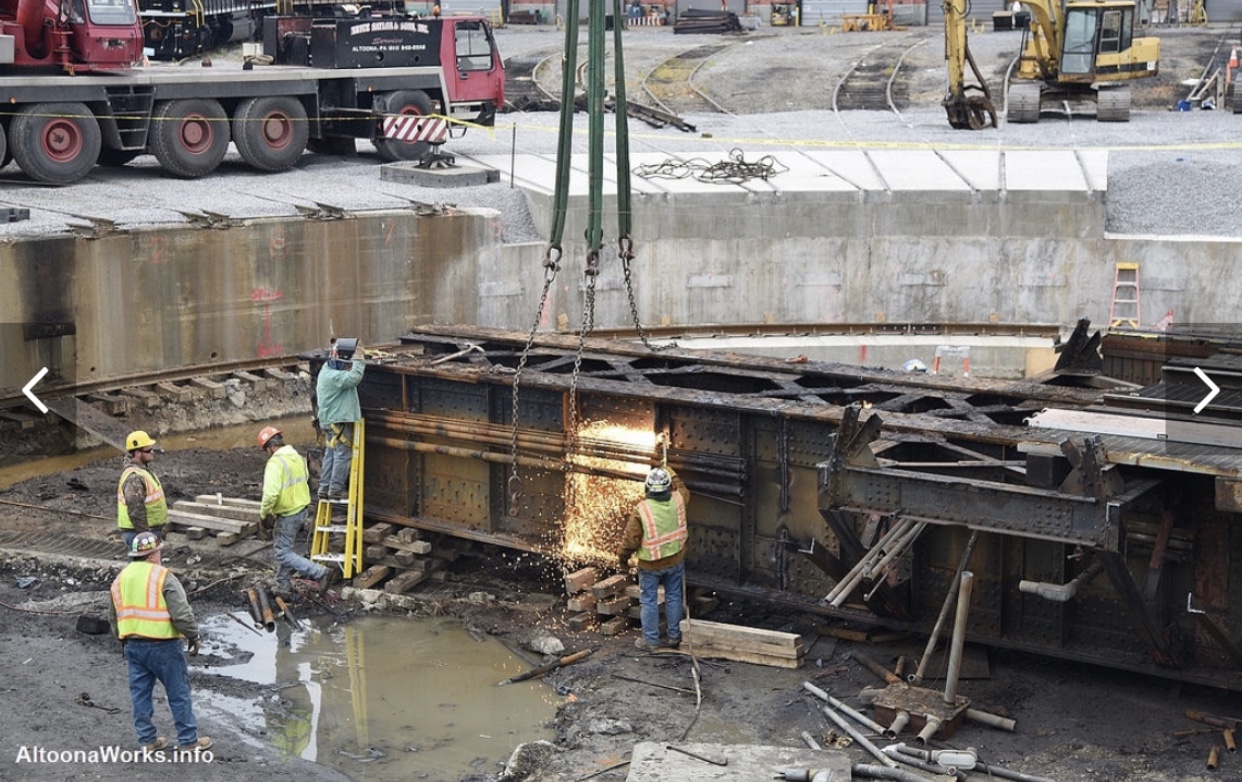
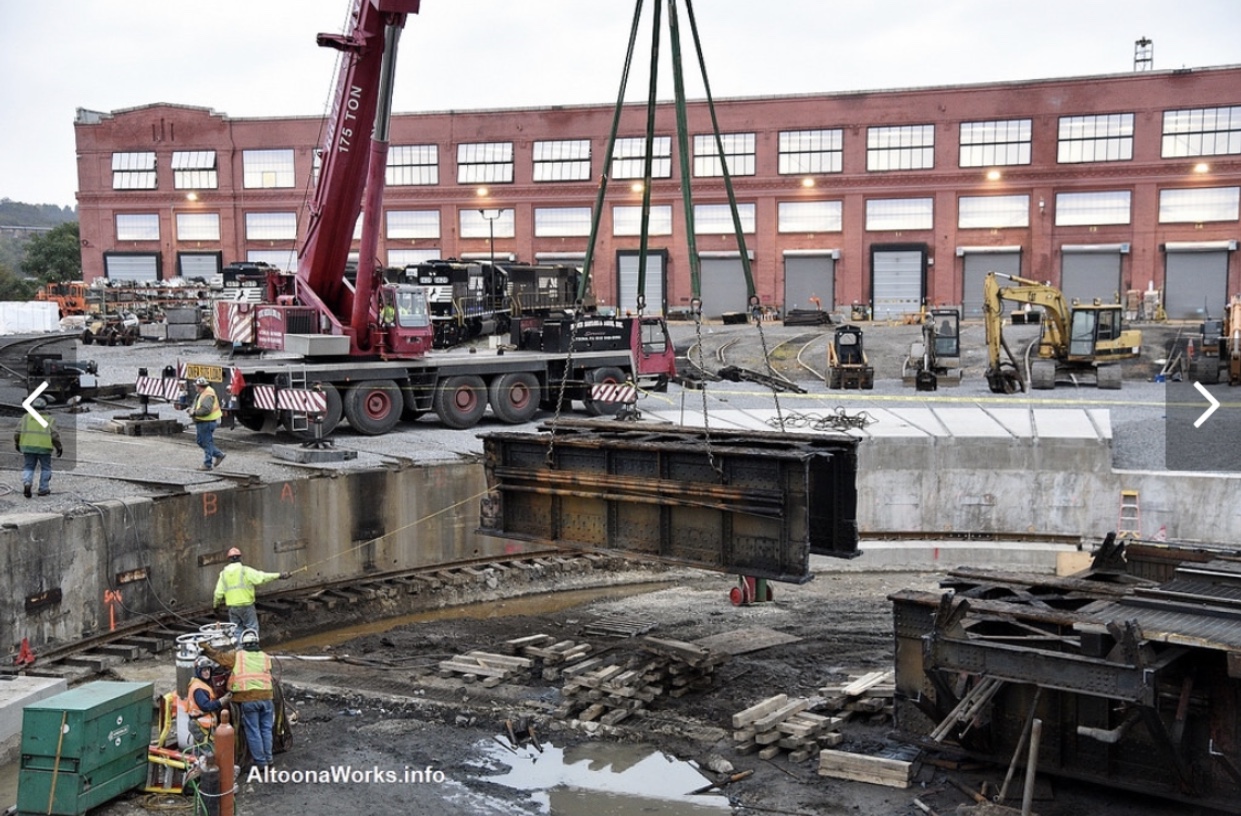
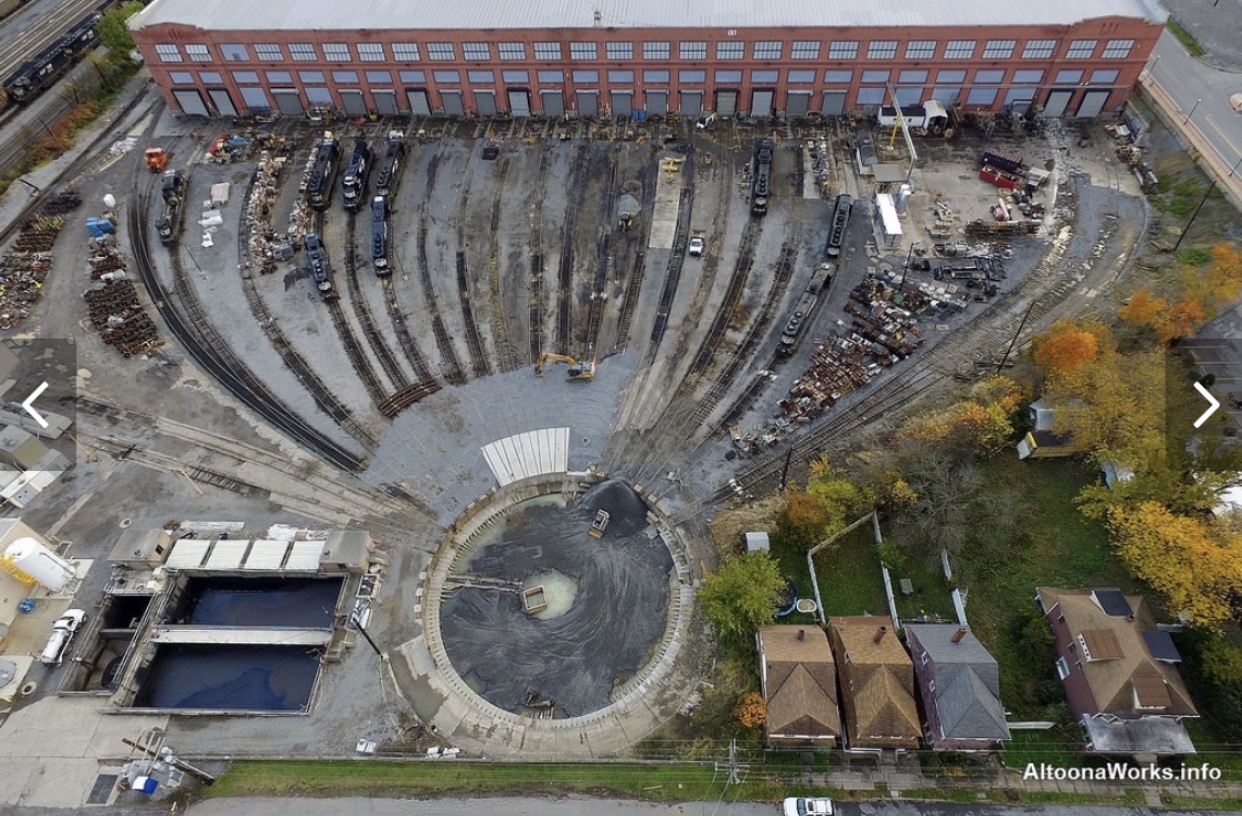
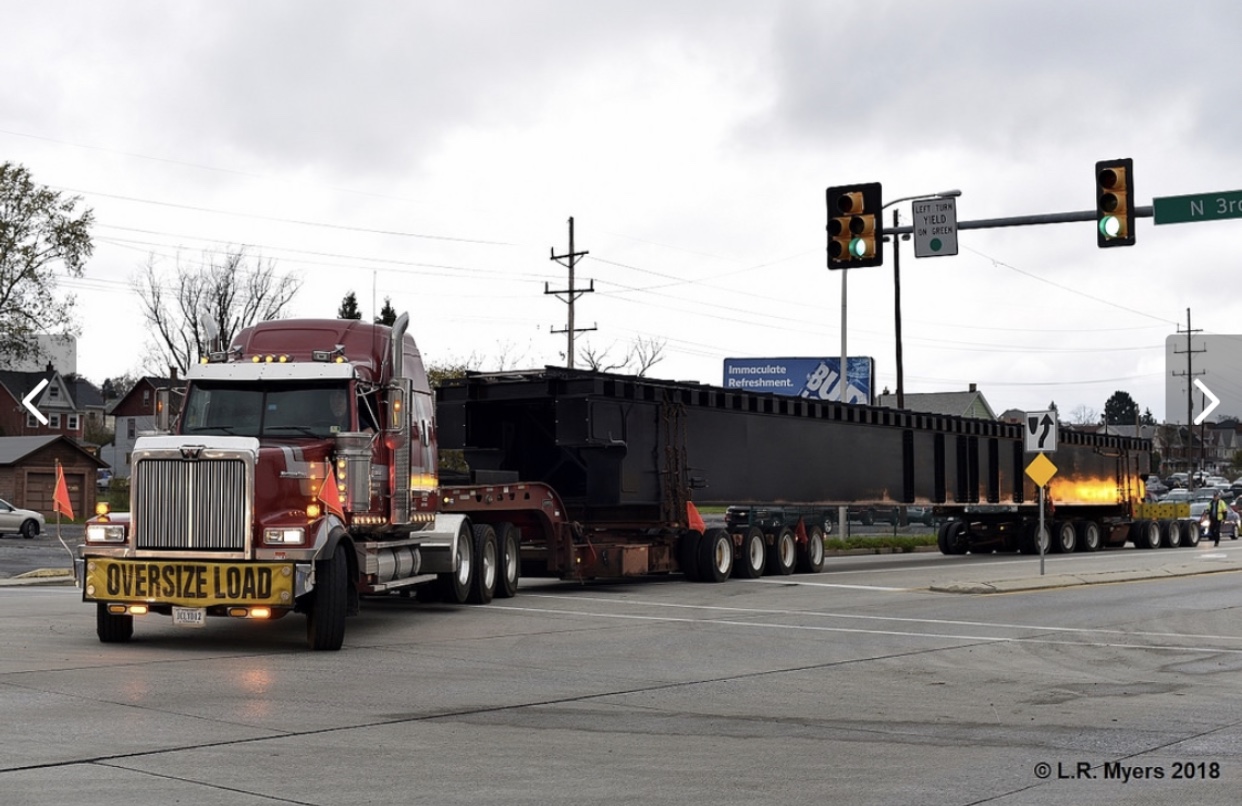
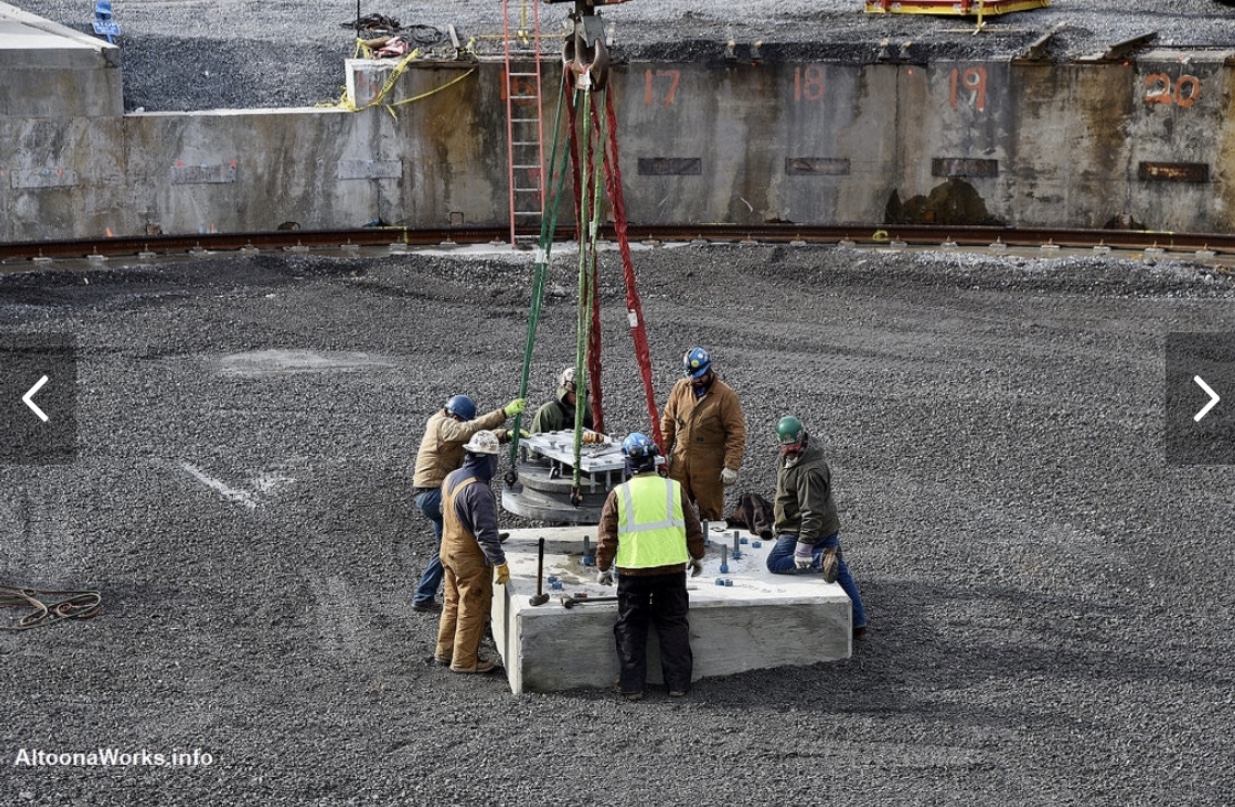
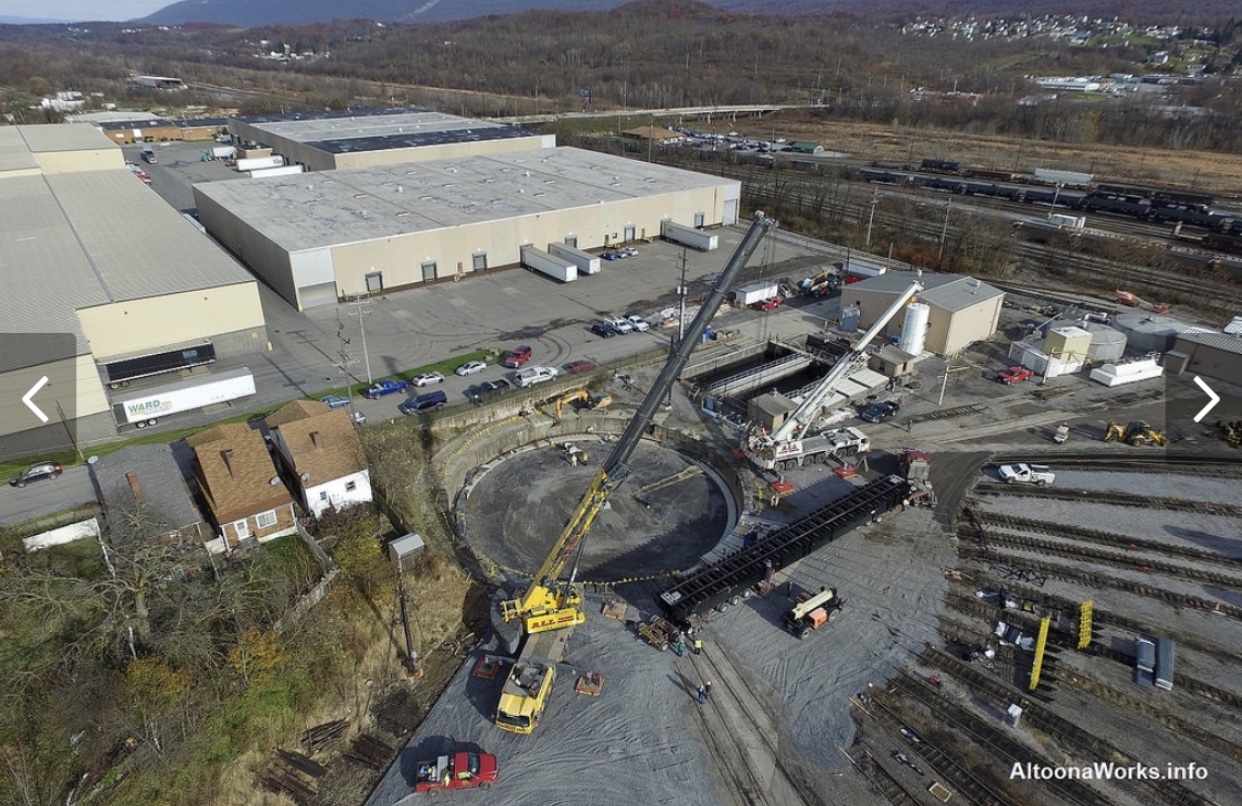
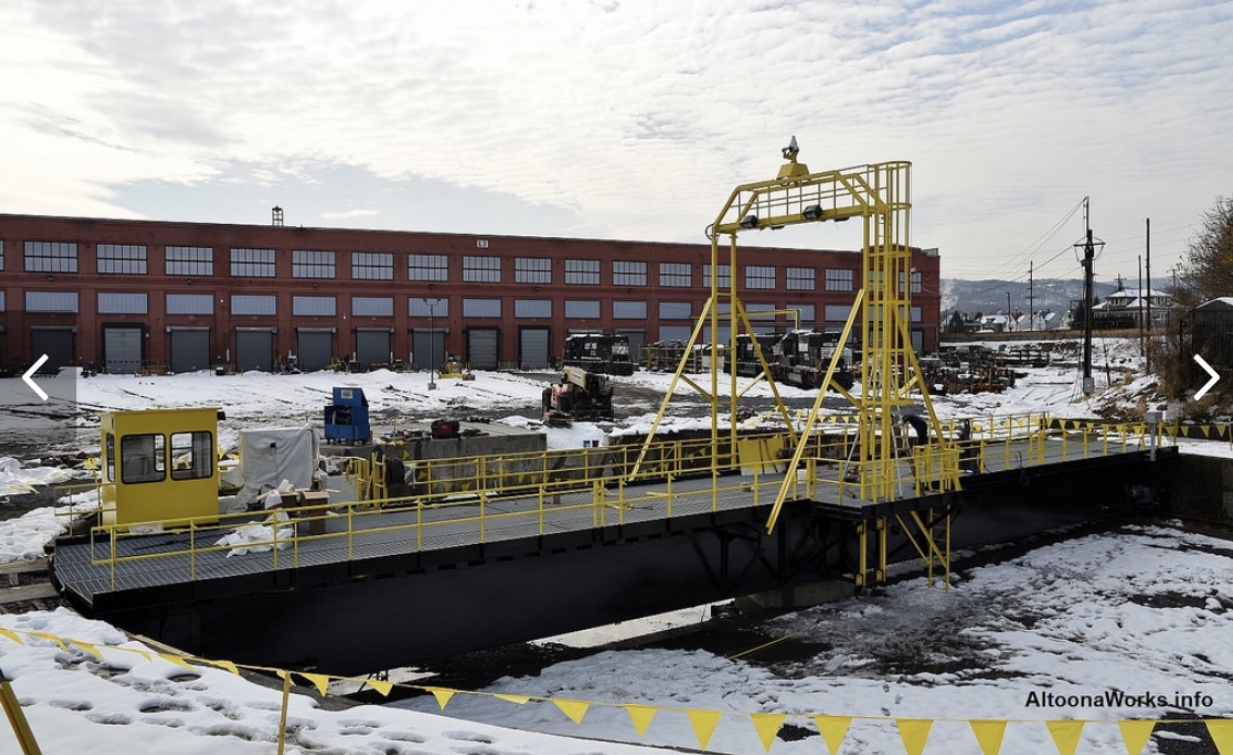
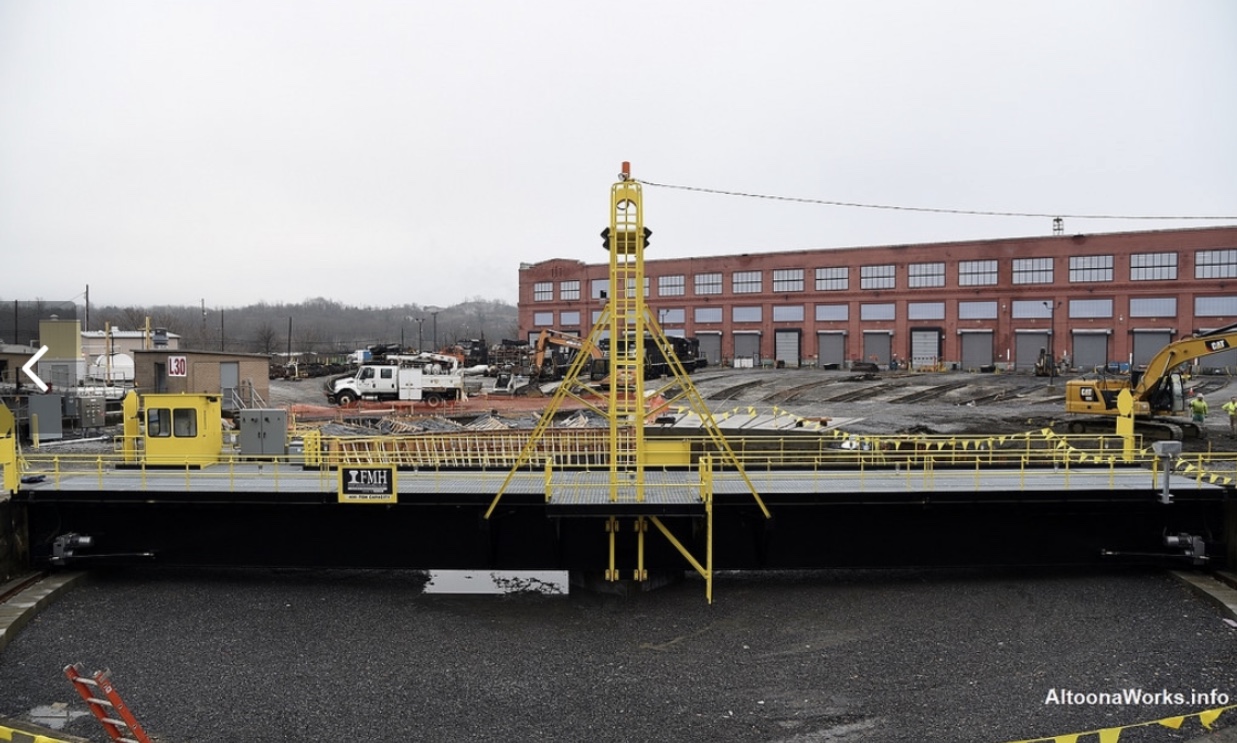





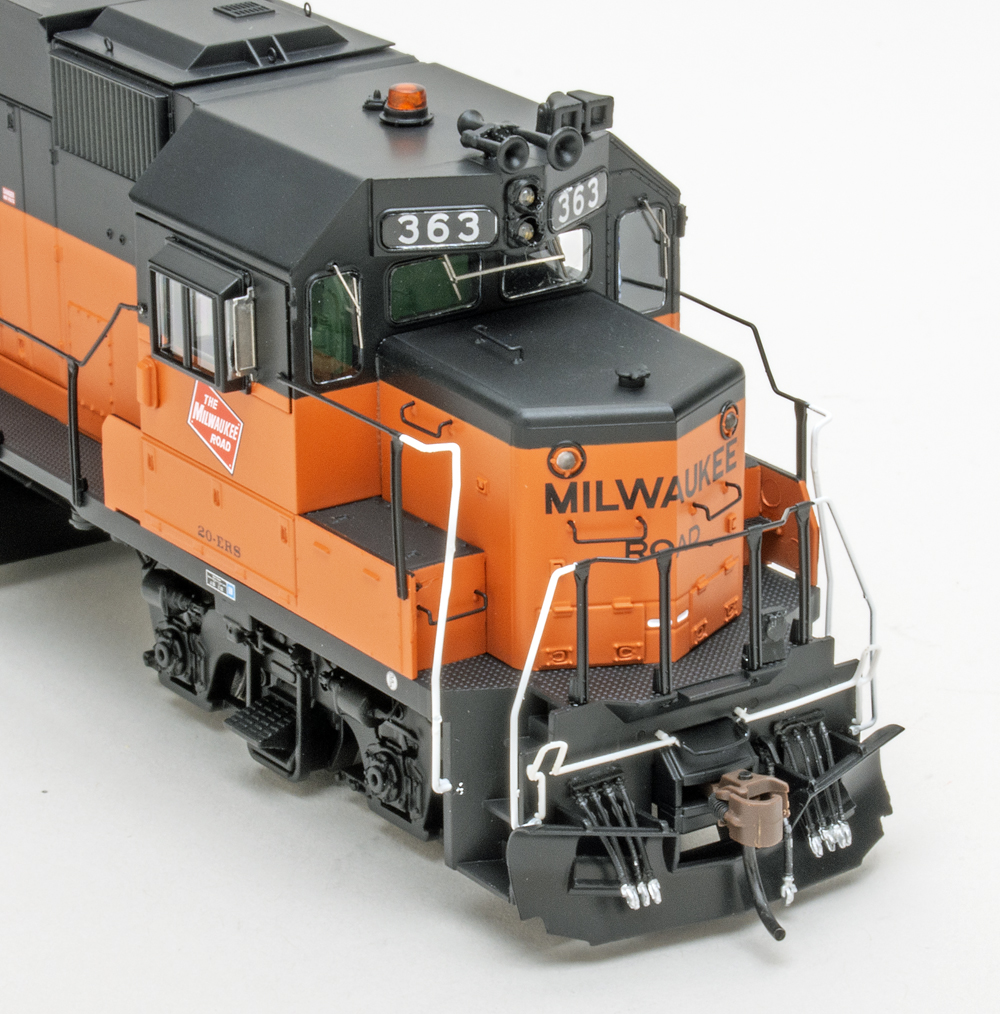





Yes, those are private homes. Sandwiched between loco shop and warehouses across the street, probably not the easiest place to get a decent nights’ sleep!!!
Are those homes to the left of the turntable? I hope a railfan club buys one. What a great place to have meetings, photo shoots, or just to hangout overnight. Not quite like the LA Streetcar at Cajon Pass, but promising.
Timeliness was paramount. When a railroad sees a replacement or improvement is needed to infrastructure, the work must be planned at a time that causes the least delay to productivity. Once dismantling began of the old table to installation and load testing of the new table, out-of-service time was less than 60 days.
Oversized loads by rail can take several months to a year to plan a proper route to allow for height/width clearances and weight restrictions. Damage to any rail infrastructure or the new turntable would mean costly delays for the turntable replacement project and other freight that needs to run timely. The most efficient transport for the railroad, its supplier and its customers was determined to be via truck.
Why was this done so late in the year ?
Good story, but an insult to the railroad that the new turntable components were delivered by truck!
The story completely misses one significant item, namely how long from when the old table was removed from service until the new one became operational. That period needs to be as short as possible.
Sam: These appear to be private residences. If you blow the one photo up and look in the backyard of the house nearest the turntable; there appears to be a covered above ground swimming pool and, possibly a hot tub next to it.
Looked at the Photo of the t/t, and the 4 houses adjacent…Amazing, living in one, it would be the world’s shortest walk to work ! They must be used for offices, I could not imagine living that close to what would appear to be a noisy, industrial operation.
Thanks, for the photos TRAINS [Lance Myers !], I have driven by that facility, but could only imagine the scope of its operations.